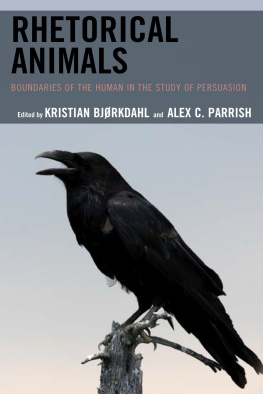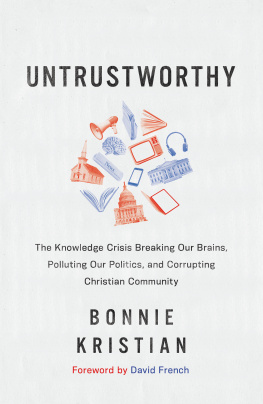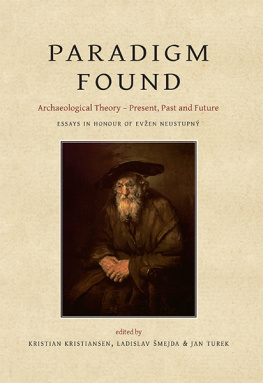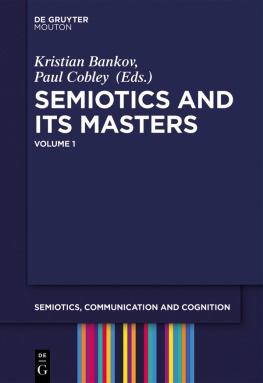Bjørkdahl Kristian - Rhetorical Animals
Here you can read online Bjørkdahl Kristian - Rhetorical Animals full text of the book (entire story) in english for free. Download pdf and epub, get meaning, cover and reviews about this ebook. publisher: Lexington Books, a division of Rowman & Littlefield Publishers, Inc., genre: Romance novel. Description of the work, (preface) as well as reviews are available. Best literature library LitArk.com created for fans of good reading and offers a wide selection of genres:
Romance novel
Science fiction
Adventure
Detective
Science
History
Home and family
Prose
Art
Politics
Computer
Non-fiction
Religion
Business
Children
Humor
Choose a favorite category and find really read worthwhile books. Enjoy immersion in the world of imagination, feel the emotions of the characters or learn something new for yourself, make an fascinating discovery.
- Book:Rhetorical Animals
- Author:
- Publisher:Lexington Books, a division of Rowman & Littlefield Publishers, Inc.
- Genre:
- Rating:3 / 5
- Favourites:Add to favourites
- Your mark:
- 60
- 1
- 2
- 3
- 4
- 5
Rhetorical Animals: summary, description and annotation
We offer to read an annotation, description, summary or preface (depends on what the author of the book "Rhetorical Animals" wrote himself). If you haven't found the necessary information about the book — write in the comments, we will try to find it.
Rhetorical Animals — read online for free the complete book (whole text) full work
Below is the text of the book, divided by pages. System saving the place of the last page read, allows you to conveniently read the book "Rhetorical Animals" online for free, without having to search again every time where you left off. Put a bookmark, and you can go to the page where you finished reading at any time.
Font size:
Interval:
Bookmark:

Rhetorical Animals
Ecocritical Theory and Practice
Series Editor: Douglas A. Vakoch, METI
Advisory Board
Bruce Allen, Seisen University, Japan; Hannes Bergthaller, National Chung-Hsing University, Taiwan; Zlia Bora, Federal University of Paraba, Brazil; Izabel Brando, Federal University of Alagoas, Brazil; Byron Caminero-Santangelo, University of Kansas, USA; Simo Farias Almeida, Federal University of Roraima, Brazil; George Handley, Brigham Young University, USA; Isabel Hoving, Leiden University, The Netherlands; Idom Thomas Inyabri, University of Calabar, Nigeria; Serenella Iovino, University of Turin, Italy; Daniela Kato, Kyoto Institute of Technology, Japan; Petr Kopeck, University of Ostrava, Czech Republic; Serpil Oppermann, Hacettepe University, Turkey; Christian Schmitt-Kilb, University of Rostock, Germany; Heike Schwarz, University of Augsburg, Germany; Murali Sivaramakrishnan, Pondicherry University, India; Scott Slovic, University of Idaho, USA; J. Etienne Terblanche, North-West University, South Africa; Julia Tofantuk, Tallinn University, Estonia; Cheng Xiangzhan, Shandong University, China; Hubert Zapf, University of Augsburg, Germany.
Ecocritical Theory and Practice highlights innovative scholarship at the interface of literary/cultural studies and the environment, seeking to foster an ongoing dialogue between academics and environmental activists.
Recent Titles
Rhetorical Animals: Boundaries of the Human in the Study of Persuasion edited by Kristian Bjrkdahl and Alex C. Parrish
Ecofeminism in Dialogue edited by Douglas A. Vakoch and Sam Mickey
The Image of the River in Latin/o American Literature edited by Jeanie Murphy and Elizabeth G. Rivero
Seeing Animals after Derrida edited by Sarah Bezan and James Tink
Eco Culture: Disaster, Narrative, Discourse edited by Robert Bell and Robert Ficociello
Southeast Asian Ecocriticism: Theories, Practices, Prospects edited by John Charles Ryan
Victorian Ecocriticism: The Politics of Place and Early Environmental Justice edited by Dewey W. Hall
Bhopals Ecological Gothic: Disaster, Precarity and the Biopolitical Uncanny by Pramod K. Nayar
Fallen Animals: Art, Religion, Literature edited by Zohar Hadromi-Allouche
Ecological Thought in German Literature and Culture edited by Gabriele Drbeck, Urte Stobbe, Hubert Zapf, and Evi Zemanek
The Horse in Literature and Film: Uncovering a Transcultural Paradigm by Francisco LaRubia-Prado
Water in Medieval Literature: An Ecocritical Reading by Albrecht Classen
Sustainability and the City: Urban Poetics and Politics edited by Lauren Curtright and Doris Bremm
Rhetorical Animals
Boundaries of the Human in the Study of Persuasion
Edited by
Kristian Bjrkdahl and Alex C. Parrish
LEXINGTON BOOKS
Lanham Boulder New York London
Published by Lexington Books
An imprint of The Rowman & Littlefield Publishing Group, Inc.
4501 Forbes Boulevard, Suite 200, Lanham, Maryland 20706
www.rowman.com
Unit A, Whitacre Mews, 26-34 Stannary Street, London SE11 4AB
Copyright 2018 by Lexington Books
All rights reserved . No part of this book may be reproduced in any form or by any electronic or mechanical means, including information storage and retrieval systems, without written permission from the publisher, except by a reviewer who may quote passages in a review.
British Library Cataloguing in Publication Information Available
Library of Congress Cataloging-in-Publication Data Available
ISBN 978-1-4985-5845-7 (cloth : alk. paper)
ISBN 978-1-4985-5846-4 (electronic)
 The paper used in this publication meets the minimum requirements of American National Standard for Information SciencesPermanence of Paper for Printed Library Materials, ANSI/NISO Z39.48-1992.
The paper used in this publication meets the minimum requirements of American National Standard for Information SciencesPermanence of Paper for Printed Library Materials, ANSI/NISO Z39.48-1992.
Printed in the United States of America
Contents
David R. Gruber
Hayley Zertuche
Kelin Loe
Jennifer Saltmarsh
Ellen Gorsevski
Dustin Greenwalt
Iklim Goksel
Alex C. Parrish
Emily Plec and Susan Hafen
Jake Dionne
Marilyn Cooper
Andrea Gutirrez
Kristian Bjrkdahl
Kristian Bjrkdahl and Alex C. Parrish
Picture, for a moment, one of the paradigmatic sites of ancient rhetorical performance: the Pnyx of ancient Athens, the assembly area where public meetings took place beginning in the early fifth century BCE. We can easily imagine the rhetor , perched on the platform at the base of the hill. And we can probably call forth an image of hismostly landed maleaudience, an assembly of anywhere from 6000 to 13,000 of the speakers citizen peers. To make the picture more concrete, let us say that the speaker, in this instance, is no lesser celebrity than Pericles, who is about to give his last speech to the city before the outbreak of the Peloponnesian war. Among them came forward Pericles, son of Xanthippus, wrote Thucydides about the event, the first man of his time at Athens, ablest alike in counsel and in action.
If we can create a mental image of this scene without much difficulty, that is because scenes like these are part of the mythology of rhetoric. As such they reveal what we intuitively tend to include in rhetorical tradition, but they also illustrate what is not there, what we do not necessarily see when we imagine, to our minds eye, a paradigmatic rhetorical situation. Among the many groupswomen, slaves, foreignerswho are famously absent from this scene, another conspicuous absence is that of animals . There are no nonhumans in this scene, nor does it acknowledge much animality in the human actors. In fact, the origin myths of rhetoric tend to imagine rhetorical performances as the pinnacle of our species capacity, humans at our most human. From Isocrates to Habermas, public discourse has been seen as a paragon of human civilization, and the ability that engenders this activitylanguage, speechis the mark of the human. No animals speak, therefore no animals persuade, therefore rhetoric is exclusively human.
What does the we of rhetoric look likeand why does it take this shape? And is there any way to imagine that nonhuman animals could form part of that community? These are the central questions of this book. The issue at stake, then, is how animals and their various forms of communication might somehow be of interest, or even inspiration, to rhetorical scholars and practitioners. Because of the relative novelty of this idea, we cannot start from preconceptionsand what follows is first and foremost an exploration . We know this from the start, however: If the prospect of a nonhuman conception of rhetoric should materialize, that would undoubtedly require a departure from the traditional image we have both of ourselves and of rhetoric. But what reasons do we have for not makingor at least testingsuch a departure?
The democratic polis of ancient Athens was notoriously exclusive: No more than 10 to 20 percent of the population took active part in public politics. The principle of isgora (), the equal right to address the assembly, was held in high regardindeed it was seen as one of the basic principles of democratic practice. Today we are perhaps more inclined to think that the ancient Greek conception of isgora was actually something of a smokescreen for highly un equal access to the public sphere. In this book, we direct the same sort of doubts at the established notion that humans are the superior, if not to say exclusive, rhetorical animal. Is this idea simply a smokescreen for other, nonhuman, forms of communication? What would happen if we cleared the air, as it were, and began to consider all forms of communication as equally interesting? What happens when we start to imagine that rhetoric is more than human ?
Font size:
Interval:
Bookmark:
Similar books «Rhetorical Animals»
Look at similar books to Rhetorical Animals. We have selected literature similar in name and meaning in the hope of providing readers with more options to find new, interesting, not yet read works.
Discussion, reviews of the book Rhetorical Animals and just readers' own opinions. Leave your comments, write what you think about the work, its meaning or the main characters. Specify what exactly you liked and what you didn't like, and why you think so.








